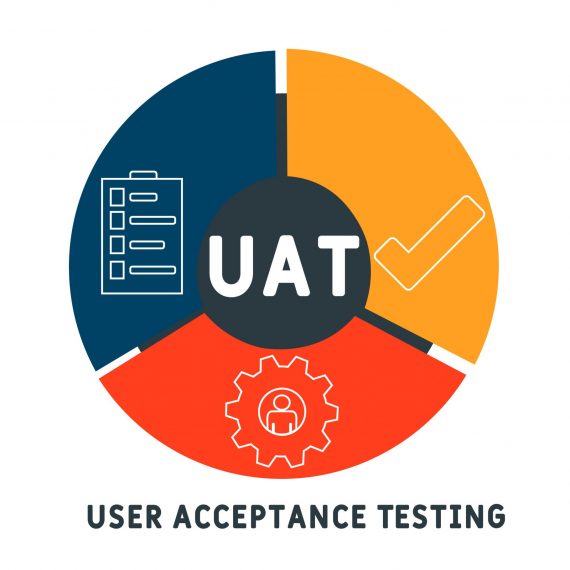What is User Acceptance Testing?
 Sanjeet Singh
Sanjeet SinghUser Acceptance Testing (UAT) is a critical phase in the software development process. It ensures that the developed system or application meets the requirements and expectations of the end users. During this phase, actual users test the software to verify whether it functions as intended in a real-world environment before it is released for full-scale production. UAT is the final step in the testing process and plays a key role in determining whether the project has succeeded from the user's perspective.

The Purpose of User Acceptance Testing
The primary goal of UAT is to confirm that the software meets business requirements and works as expected in real-life scenarios. While earlier phases of testing, such as unit testing, integration testing, and system testing, focus on technical accuracy and functionality, UAT ensures that the system aligns with the user's needs and delivers value to the business. Learning about these stages in a software testing course in Noida, Delhi, Mumbai, and other parts of India can help aspiring testers gain an in-depth understanding of the entire testing lifecycle.
Key Characteristics of UAT
End-User Involvement: Unlike other testing phases carried out by developers or testers, UAT involves the actual end users who will be using the software. These users are typically non-technical and are familiar with the business processes the system is designed to support.
Business-Oriented: UAT is closely aligned with business needs. Test cases are based on business requirements, workflows, and the actual tasks users will perform within the system.
Real-World Scenarios: UAT tests how well the system functions in scenarios that mirror real-world usage. This ensures the application performs as expected in the environment it is designed for.
Validation of Requirements: UAT validates whether the software fulfills the business requirements outlined at the beginning of the project. Business analysts or product owners are often involved in setting the scope and criteria for UAT.
Steps in the UAT Process
Planning and Preparation:
Define UAT Objectives: The first step in the UAT process is to define clear objectives. What is the purpose of the test? What business requirements need validation? These objectives should align with the project's overall goals.
Create Test Plan: A UAT test plan should document the scope, timeline, roles, and responsibilities of participants. It should also outline the tools and environments needed for testing.
Test Case Development:
Develop UAT Test Scenarios: Based on business requirements, create specific test scenarios and cases that reflect typical user behavior and workflows.
Involve End Users: Share test cases with end users to ensure they align with their expectations. Users may suggest modifications based on their experience.
Test Execution:
Conduct Tests: End users carry out tests in an environment that simulates real-world conditions. They interact with the software as they would in their daily tasks, looking for usability issues, functionality failures, and performance problems.
Bug Reporting: Any issues encountered during UAT should be documented and reported to the development team. Depending on severity, issues are addressed and resolved before proceeding.
Feedback and Iteration:
- After executing the tests, end users provide feedback to the development team, which may include refining features or fixing bugs. This feedback loop continues until the application satisfies the business requirements.
Approval:
- Once issues are resolved and users are satisfied with the results, the product is approved for release. Before moving the software into production, a final sign-off from users or business stakeholders is necessary.
Types of User Acceptance Testing
Several types of UAT can be used, depending on the software's nature, business needs, and testing objectives:
Alpha Testing: Conducted by internal users within the company, this testing happens early in the UAT phase to identify major issues before real users test the system.
Beta Testing: A selected group of real users (sometimes external) tests the software in a production-like environment. Beta testing gathers feedback from actual users outside the development team.
Contract Acceptance Testing: For software developed for an external client, this testing ensures the system meets the agreed-upon contract requirements.
Regulatory Acceptance Testing: For software that must comply with industry standards or government regulations, this UAT type ensures compliance with necessary rules and guidelines.
Benefits of User Acceptance Testing
Ensures Business Needs Are Met: UAT verifies that the software meets business goals and provides value to end users. This is crucial for the software’s success and adoption within the organization.
Reduces the Risk of Failure: By involving end users early, UAT helps identify issues that might not be apparent in earlier testing phases, reducing the risk of post-release problems.
Improves User Satisfaction: Since UAT directly involves users in the process, it allows them to influence the software’s design and functionality, leading to better user satisfaction as their needs are addressed.
Cost-Effective: Identifying issues during the UAT phase is often more cost-effective than fixing problems after the software has been released. Catching issues early helps save both time and money.
Conclusion
User Acceptance Testing is a crucial phase in software development that bridges the gap between technical development and the real-world needs of the end user. By ensuring the software meets user expectations and performs as needed, UAT helps guarantee the final product’s success and delivers value to the business. It plays a pivotal role in confirming that the software is ready for deployment and can be used effectively by its intended audience.
Subscribe to my newsletter
Read articles from Sanjeet Singh directly inside your inbox. Subscribe to the newsletter, and don't miss out.
Written by

Sanjeet Singh
Sanjeet Singh
I am Sanjeet Singh, an IT professional with experience in the IT sector. I have a broad understanding of Data Analytics and proficiency across multiple layers of software development and testing, from the front end to the back end.